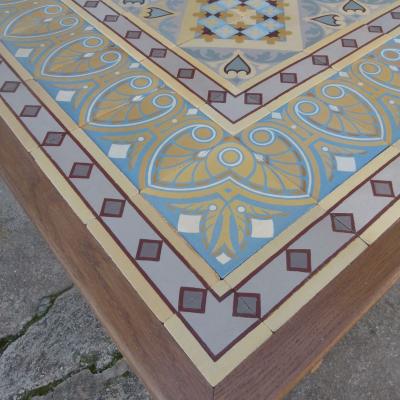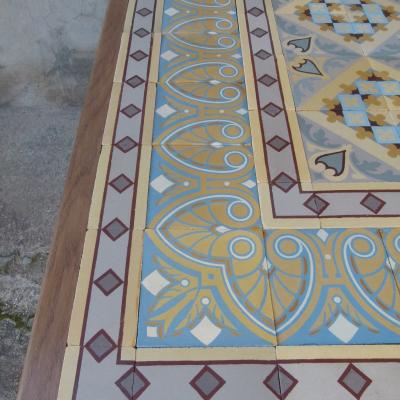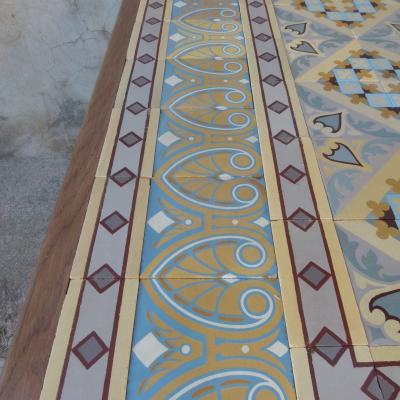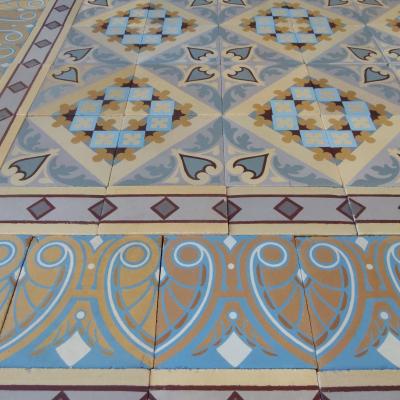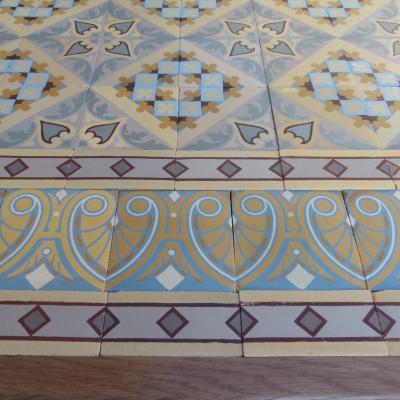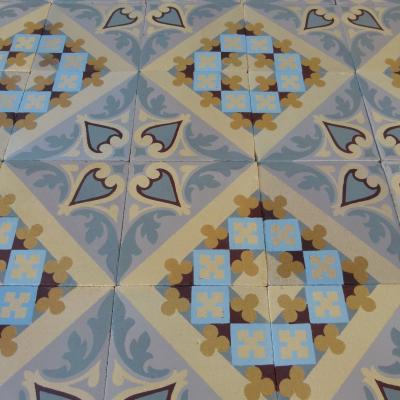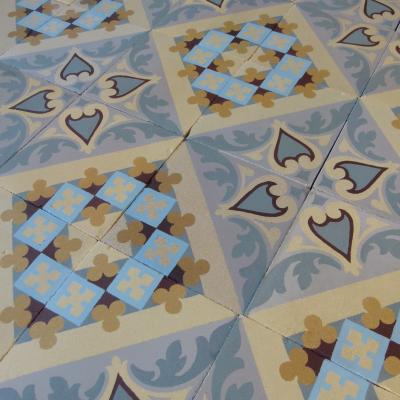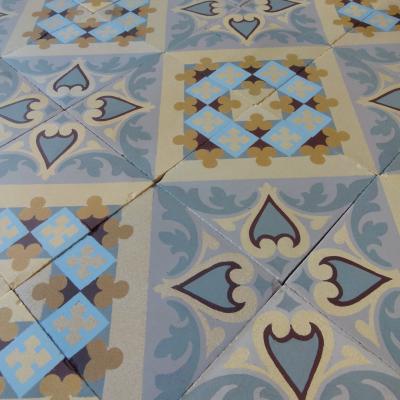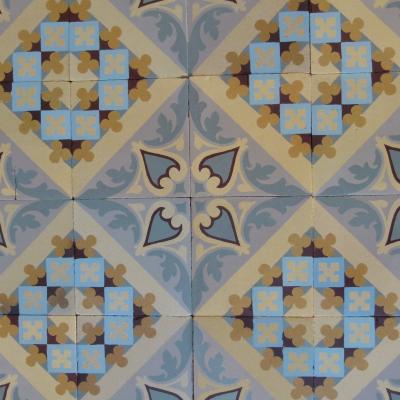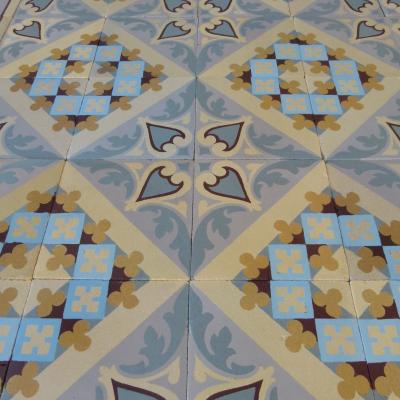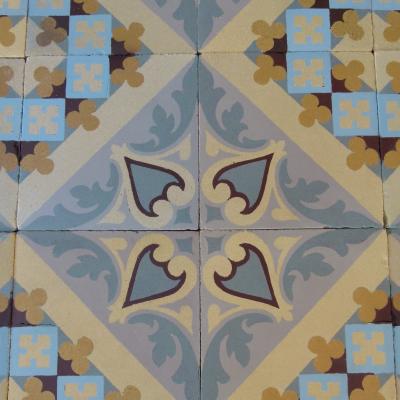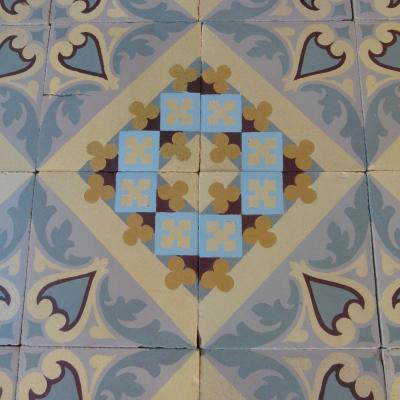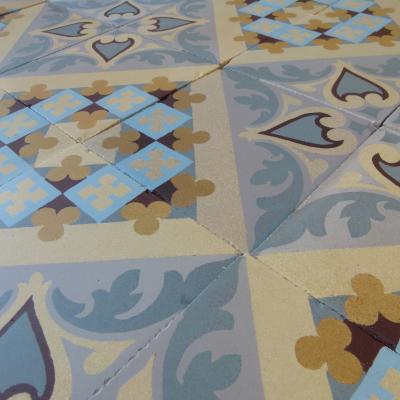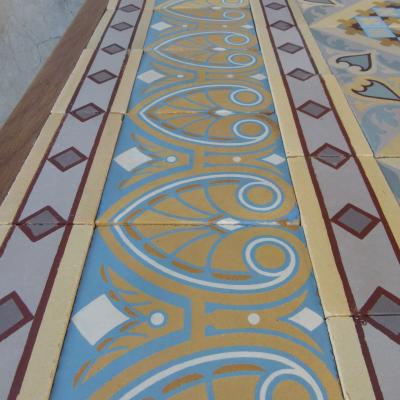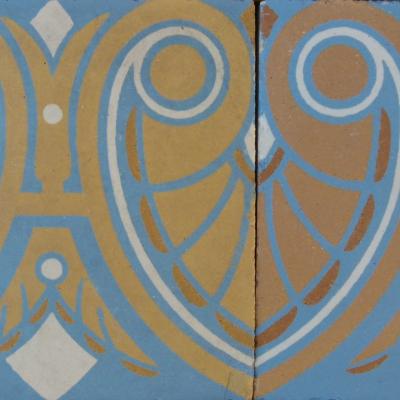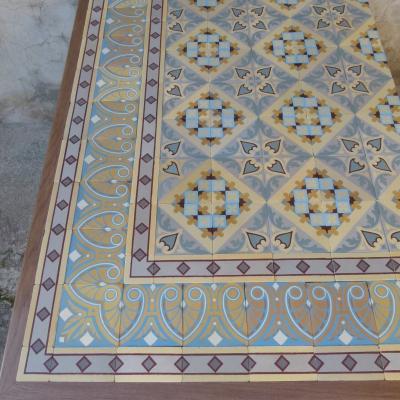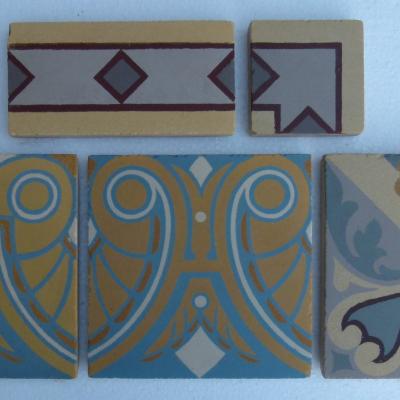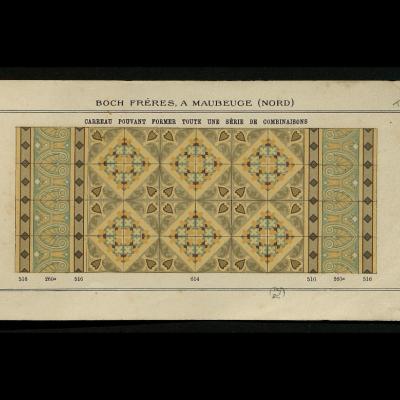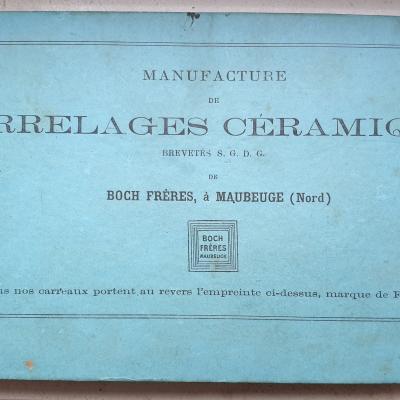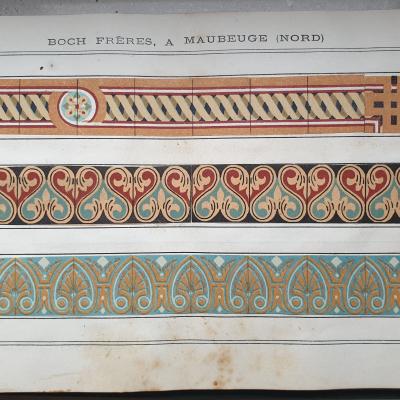A large & rare Boch Freres ceramic floor with triple borders 1881-1900
A singular expression of French ceramic artistry, this beautifully restored antique encaustic floor is as rare as it is refined. Totalling 26.4m² (285 sq ft) in surface, it retains its original triple border layout—an exquisite frame that gently draws the eye inward to delicately patterned field tiles.
Handmade between 1881 and 1900 by Carrelages Céramiques Boch Frères, Maubeuge, each tile—whether full-size (17cm square) or half-size (17cm x 8.5cm)—was crafted with care and intention. Weighing over 1.4kg (3lbs) each, these tiles were never mass-produced; their subtle design and soft tonal variations speak to the individuality of their handmade making. We include in the photo gallery scans from the original Boch Freres catalogue of 1881 giving the tiles their provenance.
Having had decades of old mortar, wax and surface dirt removed, the floor has been restored to its original beauty tile by tile, revealing a complete floor that is truly one of a kind. We believe, with near certainty, that no identical floor would be available elsewhere. Minor traces of age—small chips and edge nibbles—remain, but they are entirely groutable and only enhance the authenticity and antique patina charm of this handmade ensemble.
Whether laid in a sunlit conservatory, a serene hallway, or a romantic garden room, this floor offers more than beauty—it offers presence. It is a quiet statement, a conversation between past and present, and a rare opportunity to live with something utterly unique.
Highly fired tiles, robust and resistant to high summer or sub-zero winter temperatures the floor can be laid inside or outside of the home.
Tile quantities, give or take one or two:-
FIELD TILES – 729 tiles – 21m2 / 227 sq ft
LARGE BORDERS - 89 tiles plus 2 corners – 2.7m2 / 28.3 sq ft. – 15.5 linear metres / 50.8 linear ft.
SMALL BORDERS - 180 tiles plus 8 corners – 2.7m2 / 28.3 sq ft. – 31.3 linear metres / 102.7 linear ft.
NOTE
Antique tiles were most commonly made in single or two tile moulds. Before current computer automation methods their moulds were made by hand and the colour slips mixed by eye. Kiln temperatures could also be variable, as could the firing time. The result is that often tiles display subtle size and thickness variations and there can be tonal variations in colours, owing to the slip mixing and/or firing time. All of this makes these handmade tiles unique and adds to their charm. Some floors display their subtle variations in size and tones, some not, but when photographing we always take a random section of the floor so that it is representative of the whole. A tiler should always dry lay a section of the tiles to familiarise himself with them before starting to fix lay.
CE314



